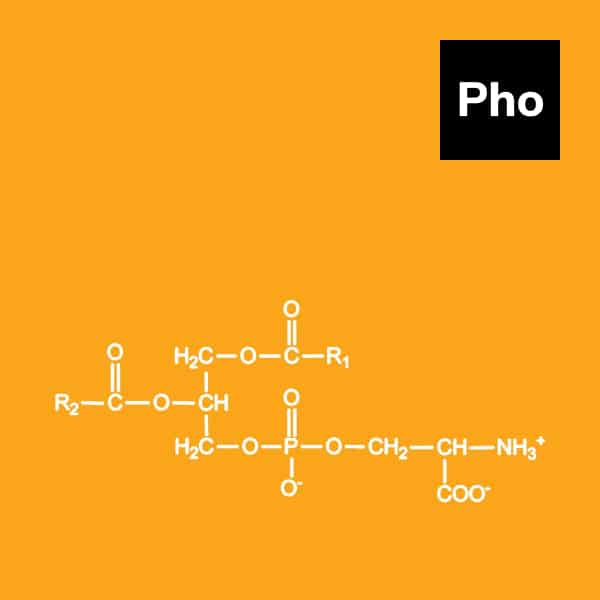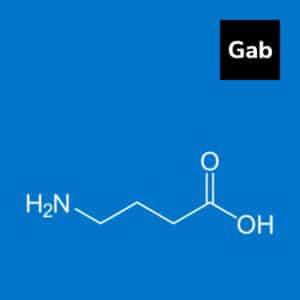Overview
Phosphatidylserine (PS) is a phospholipid found in all cells but is particularly abundant in brain cells, where it serves to safeguard the membrane integrity of brain cells. It improves the delivery of energy-producing substances into cells and the energy metabolism of brain cells. It has a critical role in memory, brain longevity, and mood.
Key Benefits
- Improves brain focus
- Contributes to memory and cognition
- Enhances mood
- May aid in the alleviation of ADHD symptoms in children
History of Usage
PS is the most extensively investigated and scientifically confirmed nutrient for brain health, having been demonstrated in several clinical trials to increase brain attention, memory, and cognition, as well as to alleviate stress and improve mood.
The Food and Drug Administration granted phosphatidylserine “qualified health claim” status in May 2003. This allows supplement labels to state “consumption of phosphatidylserine may reduce the risk of dementia and cognitive dysfunction in the elderly,” alongside the word of caution “very limited, and preliminary scientific research indicates that phosphatidylserine may reduce the risk of cognitive dysfunction in the elderly.”
According to the FDA, there is a lack of scientific consensus about the effect of phosphatidylserine on cognitive function among certified specialists. Recent reviews indicate that the association may be stronger, while the exact mechanism remained unclear. Phosphatidylserine, according to a 2020 meta-analysis of relevant clinical studies, is likely helpful at improving cognitive function in older adults with mild cognitive impairment.
The source for phosphatidylserine may be crucial, according to some studies, with the FDA stating directly on soy products. Due to the bovine spongiform encephalopathy (mad cow disease) crisis that afflicted Europe in the 1990s, PS generated from bovine brains was deemed hazardous and financially unviable.
Transphosphatidylated soybean PS and egg yolk PS were introduced as substitutes for brain cortex PS in the mid-1990s. The majority of phosphatidylserine supplements now contain soy or sunflower oil.
Biochemistry
PS is a phospholipid, which is the primary component of all plant and animal cell membranes. In humans, normal neurotransmitter metabolism and nerve signal transmission are dependent on good membrane function. PS has been proven to boost the generation of acetylcholine and the synthesis and release of dopamine—both of which are necessary neurotransmitters for memory and cognitive function.
PS is based on a molecule with a backbone containing a phosphate group to which the amino acid L-Serine is connected, thus the term phosphatidylserine. The remaining two places are composed of a variety of fatty acids. The fatty acid composition of phospholipids is determined by their source and physiological function.
PS works as a biological detergent, preserving the solubility of fatty acids and the fluidity of cell membranes. It appears to act by enhancing the brain’s glucose metabolism and the amount of neurotransmitter receptor sites. Additionally, it aids in maintaining a healthy balance of stress hormones and appropriate glucose utilization in the brain.
Egg yolks, fish, poultry, cattle liver, bovine brain, soy lecithin, and white beans all contain PS. There are trace levels in dairy products and veggies.
Recent Trends
The global PS market is predicted to increase at a 9.8% compound annual growth rate from 2021 to 2025, reaching $137.9 million in 2025, up from $95 million in 2016.
Marine phospholipids are a growing supply of omega-3 fatty acids in the marketplace, most notably from krill and fish roe, and are naturally loaded with omega-3 fatty acids. Additionally, marine phospholipids have specific characteristics that distinguish them from crude or refined fish oils. Marine phospholipids exhibit increased resistance to oxidation, improved bioavailability, and the ability to form liposomes. This may make them an appealing candidate for dietary supplements and food fortification applications where oxidation and assimilation into the food matrix are critical.
PS is available in the form of capsules, softgels, and powders.
Precautions
- Phosphatidylserine should not be taken by pregnant or nursing women.
- PS is likely safe when used orally for up to four months in children aged four to eighteen years.
- PS may induce sleepiness and gastrointestinal trouble when used in amounts greater than 300 mg.
- PS may raise the amount of a molecule called acetylcholine in the body. This substance is comparable to several drugs used to treat glaucoma, Alzheimer’s disease, and other disorders. Phosphatidylserine may raise the risk of negative effects when used with certain drugs.
- PS may increase the amount of substances that inhibit the action of atropine, scopolamine, and certain drugs used to treat allergies (antihistamines) and depression (antidepressants).
References
- Glade MJ, Smith K. Phosphatidylserine and the human brain. Nutrition. 2015 Jun;31(6):781-6. doi: 10.1016/j.nut.2014.10.014. Epub 2014 Nov 4. PMID: 25933483.
- Hirayama S, Terasawa K, Rabeler R, Hirayama T, Inoue T, Tatsumi Y, Purpura M, Jäger R. The effect of phosphatidylserine administration on memory and symptoms of attention-deficit hyperactivity disorder: a randomised, double-blind, placebo-controlled clinical trial. J Hum Nutr Diet. 2014 Apr;27 Suppl 2:284-91. doi: 10.1111/jhn.12090. Epub 2013 Mar 17. PMID: 23495677.
- Hirayama S, Terasawa K, Rabeler R, Hirayama T, Inoue T, Tatsumi Y, Purpura M, Jäger R. The effect of phosphatidylserine administration on memory and symptoms of attention-deficit hyperactivity disorder: a randomised, double-blind, placebo-controlled clinical trial. J Hum Nutr Diet. 2014 Apr;27 Suppl 2:284-91. doi: 10.1111/jhn.12090. Epub 2013 Mar 17. PMID: 23495677.
- Taylor CL (May 13, 2003). “Phosphatidylserine and Cognitive Dysfunction and Dementia (Qualified Health Claim: Final Decision Letter).” Center for Food Safety and Applied Nutrition, U.S. Food and Drug Administration. Retrieved 23 August 2014.
- Poddar, Jit; Pradhan, Munmun; Ganguly, Gargi; Chakrabarti, Sasanka (2019). “Biochemical deficits and cognitive decline in brain aging: Intervention by dietary supplements.” Journal of Chemical Neuroanatomy. 95: 70–80. doi:10.1016/j.jchemneu.2018.04.002. ISSN 0891-0618. PMID 29678666. S2CID 5014367.
- ^ Kim HY, Huang BX, Spector AA (October 2014). “Phosphatidylserine in the brain: metabolism and function.” Progress in Lipid Research. 56: 1–18. doi:10.1016/j.plipres.2014.06.002. PMC 4258547. PMID 24992464.
- Tardner, P. (2020-08-28). “The effects of phosphatidylserine supplementation on memory function in older people: A review of clinical literature • International Journal of Environmental Science & Technology.” International Journal of Environmental Science & Technology. Retrieved 2020-09-01.




